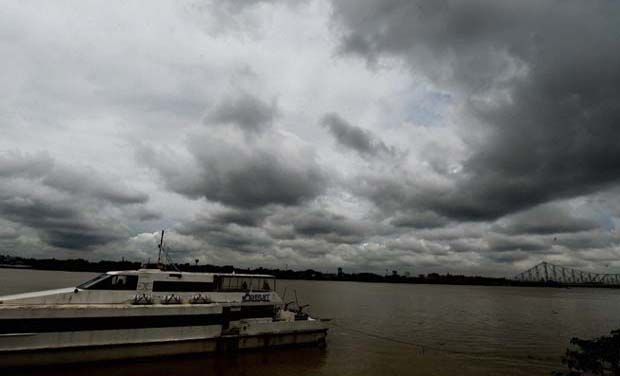Bhubaneswar” Overfishing, unauthorised shrimp farming, pollution, sedimentation and tourism are not the only factors threatening the ecosystem of Chilka, the largest brackish water lake in Asia and the second largest lake in the world, but the severe Phailin cyclonic storm has also had a devastating impact, with a decrease in salinity and increase in ammonia and silicate, scientists said.
This decrease has resulted in the appearance of the toxic freshwater cyanobacterias that, the scientists feel, may be harmful for the fish population.
Chilka, a Ramsar site — wetland of international importance — is home to 217 fish species, 211 bird species, the largest population of the Irrawaddy dolphin, and more than 30 migratory species. The lake is yielding fish worth Rs1.1 billion per annum. Near about Rs400 million per annum is being earned from community based eco-tourism activities. About 850 boats are being used for dolphin watching, while 400 boats conduct tourists for bird watching.
According to a study by the Indian National Centre for Ocean Information Services (Incois), an autonomous body under the union ministry of earth sciences, Phailin, which had made landfall at the Gopalpur coast October 12 last year, has altered the concentration of salinity, silicate and ammonia.
Chilka lagoon spreads over three districts — Puri, Khordha and Ganjam -in Odisha. Based on highly productive ecosystem, rich biodiversity and socioeconomic importance, It was designated a Ramsar site in 1981. The Ramsar Convention is an international treaty for the conservation and sustainable utilisation of wetlands, recognising the fundamental ecological functions of wetlands and their economic, cultural, scientific, and recreational value.
The study revealed that the comparison between post-Phailin observations against southwest monsoon of 2013 (pre-Phailin) and the post-southwest monsoon of 2012 showed significant changes in the distribution of salinity, ammonia and silicate.
The water quality status of the lagoon was monitored after Phailin during December 2013 in all the four sectors — northern, southern, central and the outer channel — of the lagoon.
“The heavy rainfall that lashed coastal Odisha after the landfall of cyclone Phailin has significantly altered the concentration of silicate and ammonia in the Chilka lagoon. This large variation may lead to alteration in the composition of phytoplankton species and this will have profound implications on the food web and the lagoon’s economy,” the study said.
The water quality largely depends on influx of freshwater as a result of rainfall and river overflow.
“The ecological disruption in the lower order food chain may have a significant impact on fishery. The appearance of the toxic freshwater cyanobacterias may be harmful for the fish,” Incois project scientist Sanjiba Kumar Baliarsingh said.
Post-Phailin observations have indicated a significant decline of salinity in all the four sectors, he added.
While the outer channel that connects the main lagoon to the Bay of Bengal was observed with highest decrease in salinity, the southern sector of the lagoon was observed with average salinity, four times less than the level during pre-Phailin, Baliarsingh added.
“In our paper we have mentioned that few toxic cynaobcterial species [one group of phytoplankton] have been observed in one particular part of the lagoon. It doesn’t mean that the entire lake water has become toxic,” noted Subhashree Sahoo, a PhD scholar at Berhampur University and the report’s lead author.
Taxonomic studies also revealed freshwater phytoplankton species in the southern sector. Their appearance in this particular sector is a matter of concern due to their toxic nature.
K.C. Sahu of Berhampur University’s Marine Science Department, said among nutrients, silicate and ammonia have shown significant increase during post-Phailin period in comparison to the pre-Phailin period.
All the sectors were observed with high silicate concentration. This may promote the growth of diatomic species. Due to the fresh water influx, enrichment of ammonia was also observed in the lagoon. Ammonia is one of the most important nitrogen sources for phytoplanktons.
However, the Chilika Development Authority (CDA) claimed it is continuously monitoring the entire lagoon and taking steps for the good health of the lagoon.
“We are taking every step for the safety of the lagoon. We are constantly monitoring water quality, fish and the biodiversity. There is no toxic water in the lake,” CDA chief executive Ajit Kumar Pattnaik said.

